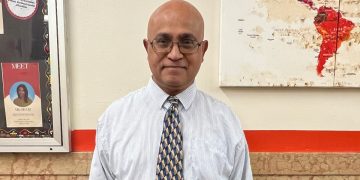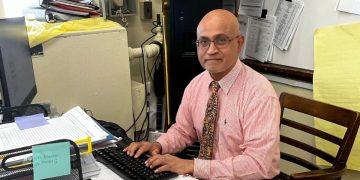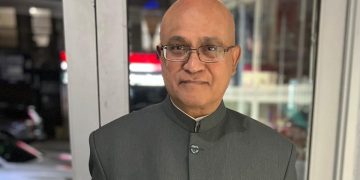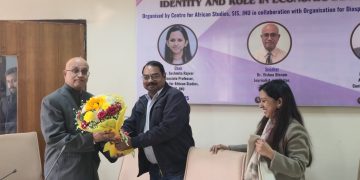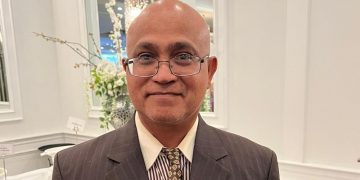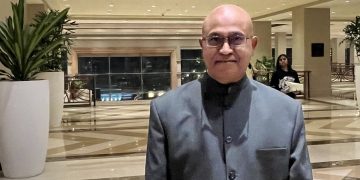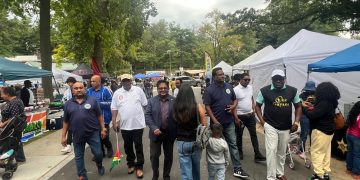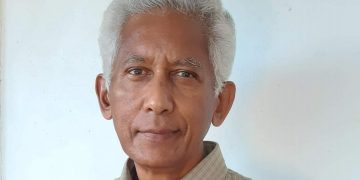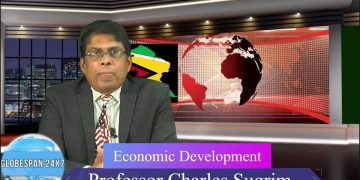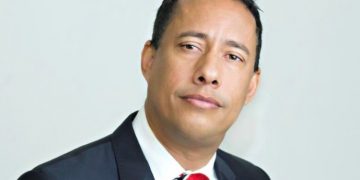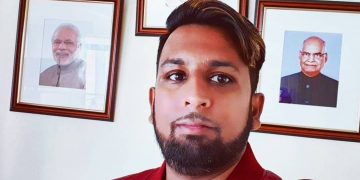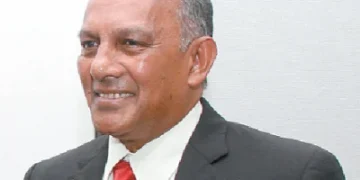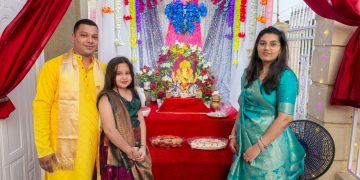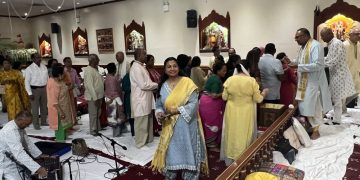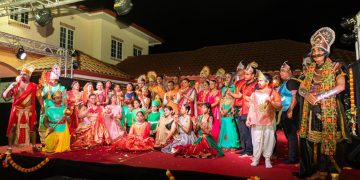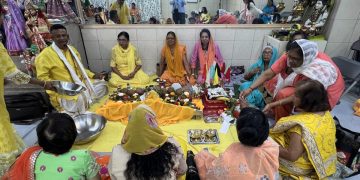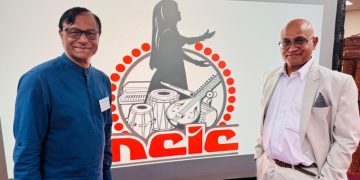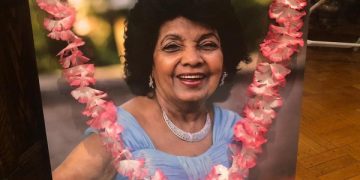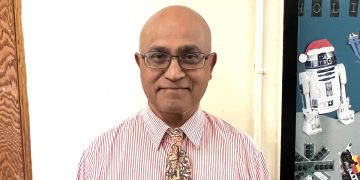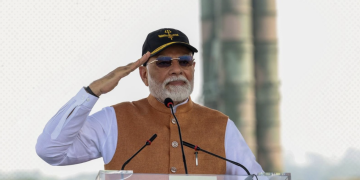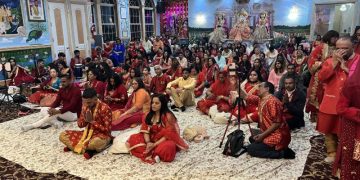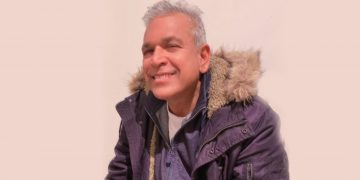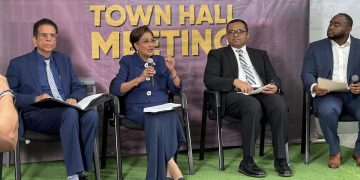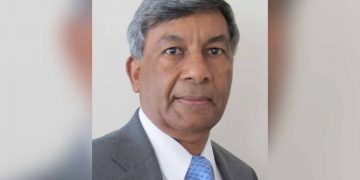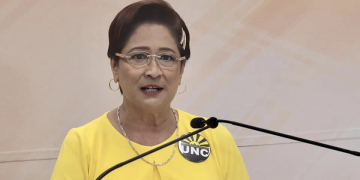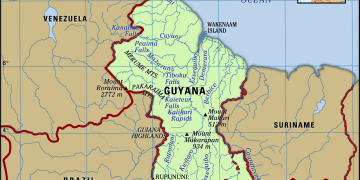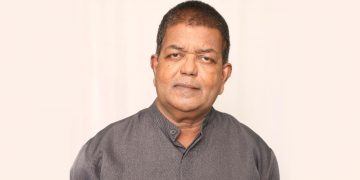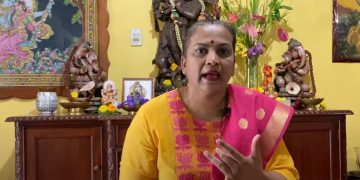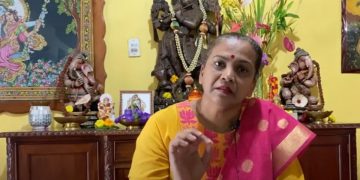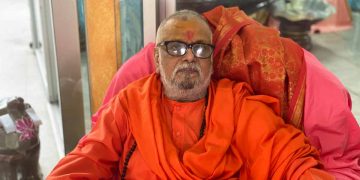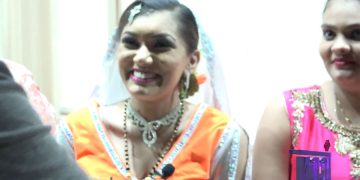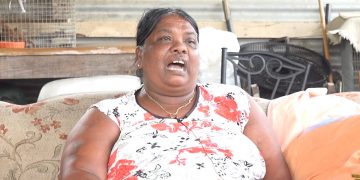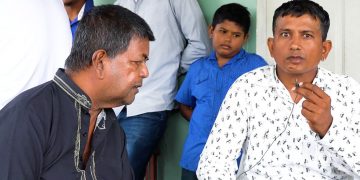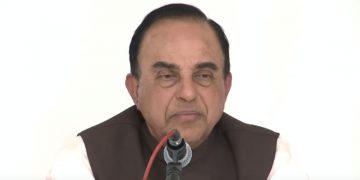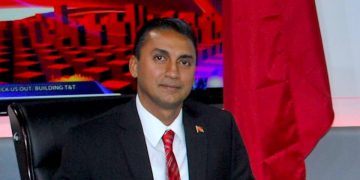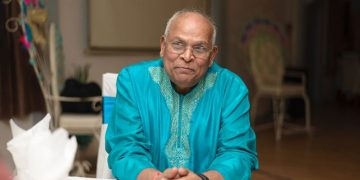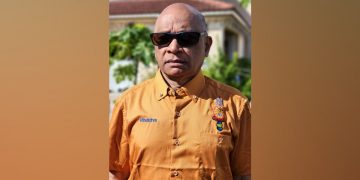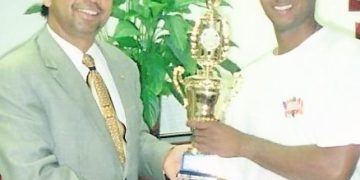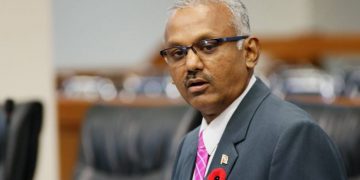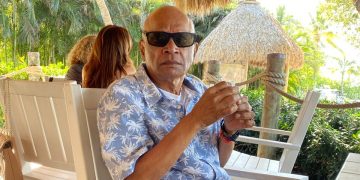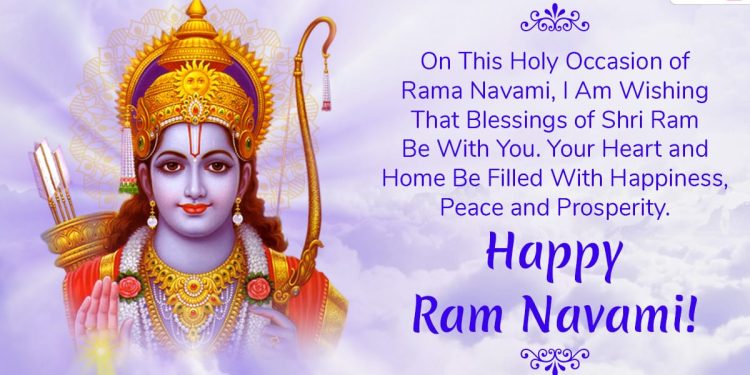Indo Caribbean Hindus in America celebrated Ram Naumi (Navami), the birth or appearance of Lord Rama, last Saturday midday and in the evening April 5 in their homes and in Mandir’s. Many Hindus performed puja at the Mandir around noon. In the evening, temples were packed to capacity to partake in services. Puja was also held Sunday morning and evening at several Mandirs. In Guyana, Trini, Suriname, nightly service or katha was held that culminated in Naumi.
Ran Naumi culminated the observance of Navratri or nine nights of worshiping the Devis. Mandirs held nightly service in America. Every temple in the greater New York area was packed. Hundreds of thousands of Indo Caribbeans are settled in the greater New York area. There are dozens of Guyanese Mandirs in the NY metro area, including in Schenectady, New Jersey, Connecticut and Pennsylvania. There are also Indo Caribbean mandirs in Miami, Ft Lauderdale, Dallas, Houston, Minneapolis, Atlanta, Chicago, and a few other cities where there are large clusters of Guyanese, Trinidadians, Surinamese and other Caribbean Hindus.
Ram Naumi is one of the more popular festivals of Hindus, though not in the same category as Diwali or Phagwah attracting large gatherings for congregational worshipping.
Ram Naumi is tied to Navratri, the holiest period in the Hindu calendar in the Spring. Hindus have been observing Navratri since March 29, a fasting period that culminated with observance of Ram Navami. Navratri is an auspicious time for puja, marriages or new undertakings. People tend to have Durga puja during Navratri. Just prior to Navratri is known as “Karwas,” which prohibits marriages or poojas or new undertakings. Navratri comes right after Holi and just before Hanuman Jayanti and Seeta Jayanti.
Navratri is one of the most auspicious periods in the Hindu calendar and during this time the feminine aspects of God are worshipped. Temples held discourses from the Ramayana or other holy books, focusing on Durga, Lakshmi, and Saraswati. The holy ‘Ramayana’ was read with a discourse during Navratri and on Ram Navami and their lessons explained by the presiding pandits.
People thronged mandirs for nine nights of religious observance and propitiation of the three Devis and for the birth of the Lord. Hindus view Lord Ram as the seventh incarnation of Lord Vishnu. They believe that when the evil forces were out to destroy the world, Lord Vishnu incarnated as Lord Rama and made his appearance on earth to save the world and to re-establish dharma – righteous life.
Devotees fasted (avoiding meat, fish and eggs) and visited temples and conducted prayers at homes on the preceding days. Many observed a strict fast, avoiding food during the day for over two weeks. Some avoided eating non vegetarian diet. Fasting, avoiding food, pandits explained, is good for the body and the soul. Many performed or sponsored pujas or Ramayana kathas (discourses) as is the custom in Guyana, Trinidad, Suriname, and other parts of the Caribbean.
Hindus believe that chanting Lord Rama’s name removes all devotees’ sins and brings prosperity to them. Lord Shri Rama fulfils the wishes and desires of his devotees.
At the mandirs and at Lukas at home, there was bhajan and kirtan singing and the Pandit’s Pravachan or message. This was followed by havan or burning of the fire with samagri and spices. Aartee was performed. Elaborate vegetarian meals were prepared nightly for Navratri and for the celebration of the lord’s birthday on Saturday.













